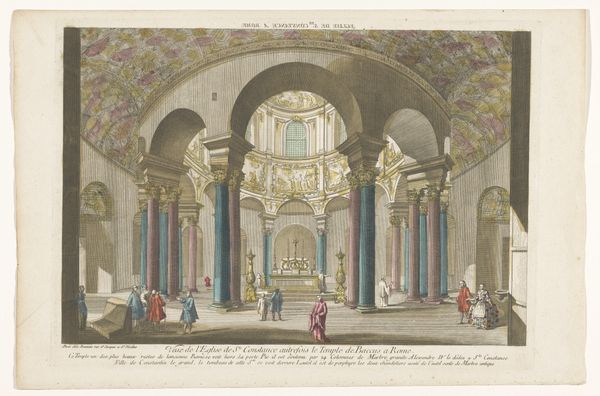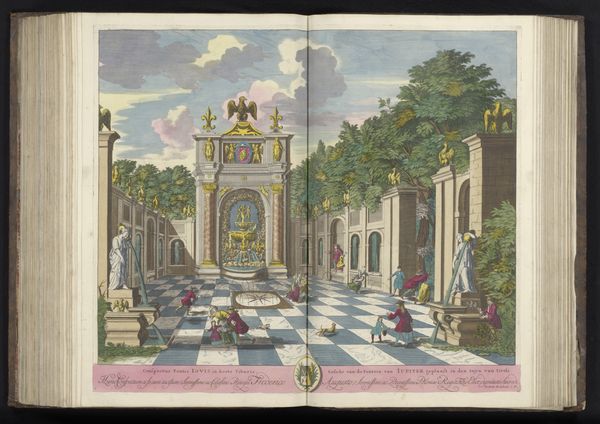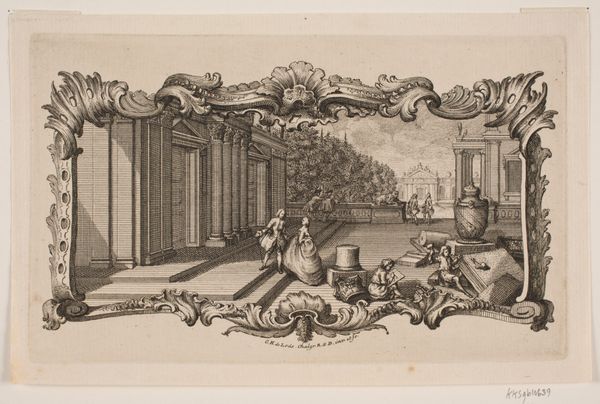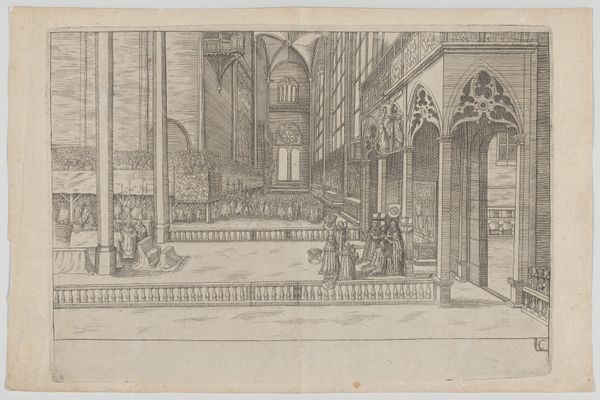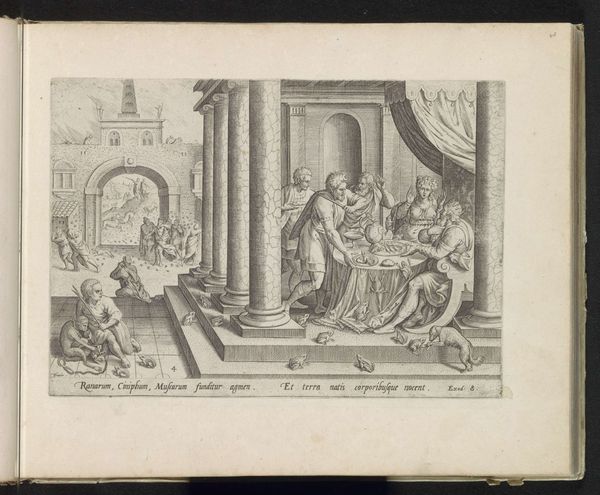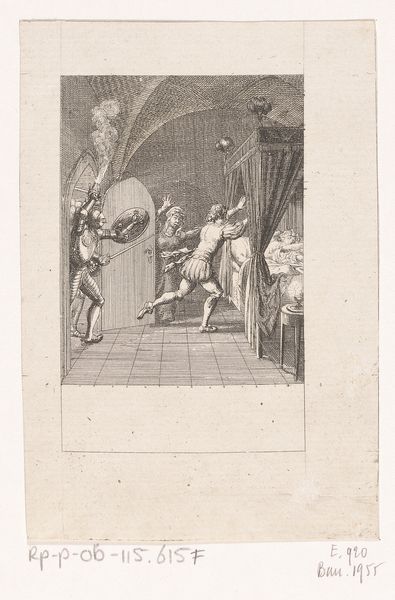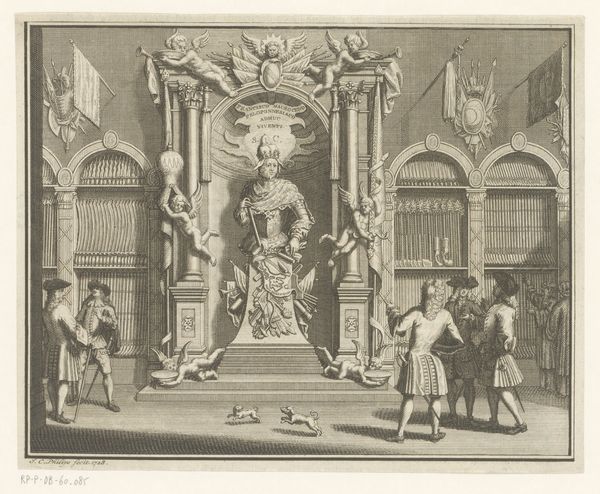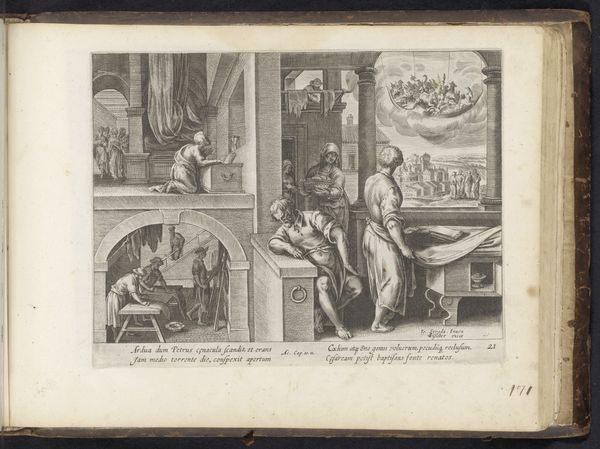
print, engraving
#
narrative-art
#
baroque
# print
#
genre-painting
#
history-painting
#
engraving
Dimensions: height 297 mm, width 423 mm
Copyright: Rijks Museum: Open Domain
Editor: This is an 18th-century engraving entitled "Jozef verklaart de dromen van de bakker en de schenker," or "Joseph Explains the Dreams of the Baker and the Cupbearer," currently housed in the Rijksmuseum. The artist isn't named, but the architectural space, and the characters placed carefully within it, create a powerful sense of depth and narrative. What compositional choices stand out to you in this work? Curator: Indeed, the perspectival rendering of the arcade, its recession toward a vanishing point barely glimpsed in the distance, immediately asserts itself. Consider how this formal element structures our reading of the image. The artist manipulates light and shadow, particularly on the tiled floor, enhancing the sensation of depth, doesn’t it? Editor: Yes, definitely. And the figures, though small in scale, are carefully positioned along that receding space. Joseph, in his red and blue robes, is centrally placed, acting almost as a fulcrum. Are those dream visions hovering above, then? Curator: Precisely. Those ethereal vignettes disrupt the otherwise rational architectural space. They serve a crucial function in conveying the content, in illustrating Joseph’s prophetic abilities. Note the stark contrast in their rendering—cloud-like and ephemeral versus the sharp lines of the arcade. What is the impact of that contrast? Editor: It emphasizes the separation between the physical and the visionary realms, perhaps. The solidity of the architecture grounds the narrative, while the floating images signal a departure from reality. Curator: Precisely. And the dogs are situated at each corner, almost like sentinel figures, marking and framing that picture plane. Have you taken note of their correspondence? One, with his chin in the tiles of the arcade, the other, vigilant to our viewing right. Editor: The placement and treatment of figures almost feels staged, creating meaning at every location along the axis of that line we had first remarked. Curator: I concur! What seems at first a representational tableau also performs like a play with deliberate composition. Editor: I see now that the artist employed a formal structure to aid in visually communicating narrative through contrasting dreamscapes. Thanks for explaining this with me!
Comments
No comments
Be the first to comment and join the conversation on the ultimate creative platform.

